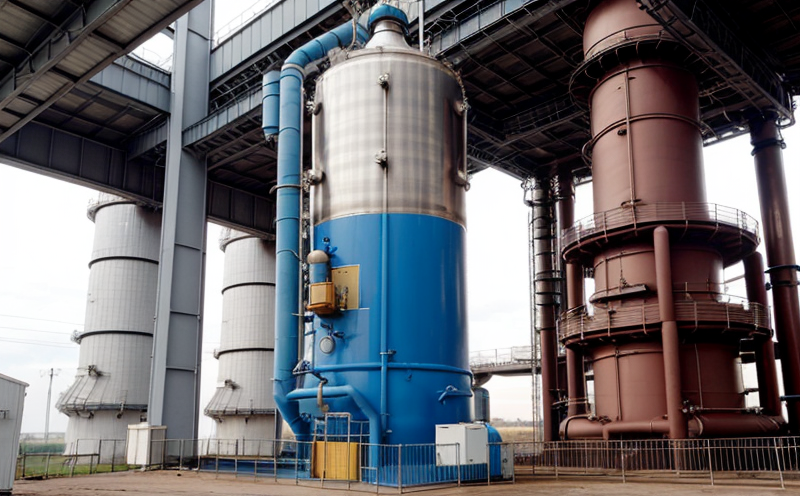Reactor vessel inspection
The reactor vessel is a critical component in nuclear power plants and research facilities. Its integrity directly affects operational safety and compliance with international standards such as ISO 9712, ASME Section III, and EN 15085. A reactor vessel is subjected to extreme conditions, including high pressure, temperature fluctuations, radiation exposure, and corrosive environments. Ensuring its structural soundness through thorough inspection is paramount.
The process of inspecting a reactor vessel involves several stages: initial assessment, pre-inspection preparation, non-destructive testing (NDT), data analysis, and reporting. The first step is to understand the specific requirements set by regulatory bodies like the International Atomic Energy Agency (IAEA) and the Nuclear Regulatory Commission (NRC). These standards mandate rigorous inspections to prevent potential failure or leaks that could lead to catastrophic events.
Pre-inspection preparation includes assessing the vessel's condition, identifying critical areas for inspection, and selecting appropriate NDT methods. Common NDT techniques used in reactor vessel inspection include:
- Magnetic particle testing (MPI)
- Radiographic examination (RT)
- Ultrasonic testing (UT)
- Eddy current testing (ET)
Each method has its own advantages and limitations, depending on the material type, geometry of the vessel, and the expected defects. For instance, UT is highly effective for detecting internal flaws but requires precise coupling between the probe and surface being examined.
Data collection during inspection involves meticulous recording of all findings. This data serves as a baseline against which future inspections can be compared to detect any changes indicative of degradation or wear. The use of advanced imaging technologies such as computed tomography (CT) can provide detailed cross-sectional views, enhancing the accuracy and reliability of inspections.
The final step in reactor vessel inspection is generating comprehensive reports that document every aspect of the examination process. These reports are crucial for stakeholders involved in plant operations, maintenance schedules, and regulatory compliance. They include not only raw data but also interpretations based on industry best practices and past performance trends.
Applied Standards
The inspection of reactor vessels must adhere to several international standards to ensure safety and quality. These standards provide guidelines for various aspects including design, construction, testing, and maintenance procedures.
- ISO 9712: Non-destructive testing - Qualification and certification of non-destructive testing personnel
- ASME Section III: Rules for Pressure Vessel Construction
- EN 15085: Welding, fabrication and inspection of railway rolling stock and components (including pressure equipment)
- IAPWS-TP-12: Guidelines on the Testing and Evaluation of Steam Generator Tubes and their Supports in Power Plants
These standards are designed to cover different stages from initial design through final inspection. They address issues such as proper qualification of personnel involved in non-destructive testing, ensuring accurate welds, and evaluating steam generator tubes.
In addition to these general guidelines, specific attention should be paid to local regulations imposed by national governments or regional authorities responsible for nuclear safety. Compliance with these rules is essential not only for operational efficiency but also for meeting legal requirements and avoiding costly penalties.
Scope and Methodology
The scope of reactor vessel inspection encompasses multiple facets aimed at ensuring the structure remains safe and reliable over its service life. This includes both internal and external examinations covering all accessible surfaces and critical areas. The methodology employed ensures that no part of the vessel escapes scrutiny.
Internal inspections typically focus on detecting cracks, corrosion, erosion, and other signs of degradation within the reactor core or primary coolant piping system. External checks concentrate more broadly across the entire shell of the vessel, looking for structural anomalies such as dents, bulges, or weld defects.
Instrumentation plays a crucial role in enhancing inspection capabilities by providing high-resolution images and detailed measurements. Advanced probes equipped with sensors capable of capturing multiple forms of radiation allow inspectors to probe even the most challenging regions inside the reactor vessel without interrupting service.
Data analysis is another key component ensuring accurate interpretations of findings. Software tools designed specifically for nuclear applications help process vast amounts of raw data into meaningful insights about the condition of the reactor vessel. This allows operators to make informed decisions regarding necessary repairs or replacements based on sound evidence rather than assumptions.
Eurolab Advantages
At Eurolab, we pride ourselves in offering unparalleled expertise and comprehensive services tailored specifically towards reactor vessel inspection needs. Our team consists of highly qualified professionals who possess extensive experience working with similar complex structures across various industries.
- Comprehensive Knowledge Base: We stay updated on the latest technologies and methodologies ensuring our inspections remain state-of-the-art.
- Dedicated Resources: State-of-the-art facilities dedicated to reactor vessel inspection ensure consistent high-quality results.
- Global Reach: With offices in multiple countries, we can service clients worldwide efficiently and effectively.
- Regulatory Compliance: Our services meet all applicable international standards and local regulations guaranteeing compliance without compromise.
We understand that every reactor vessel is unique requiring individualized attention. That’s why our approach emphasizes flexibility allowing us to adapt our strategies according to specific client requirements while maintaining unwavering commitment to excellence.





